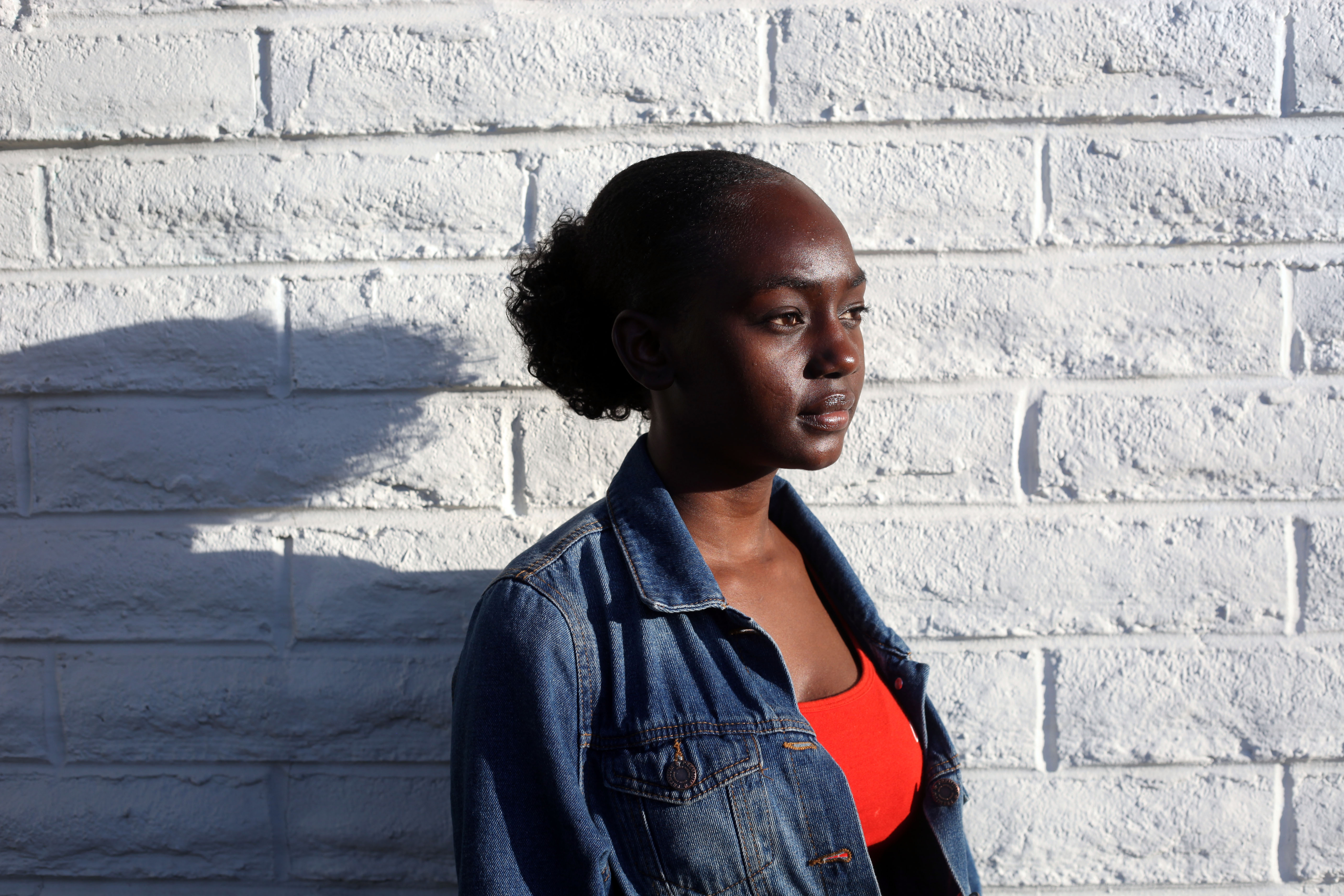The following article appeared in the June 2013 issue of City Heights Life. Marie Kofod Svensson is a researcher from Denmark who spent six months working with The AjA Project and Karen Organization of San Diego this spring. She was an instructor for the program described below.
It’s a Friday afternoon and a group of Karen refugees have just arrived at the Karen Organization of San Diego. With cameras hanging from their necks, they settle on the floor while they talk, listen to music and giggle as they show each other images and videos on their iPods and cameras. In the middle of the room, two elder Karen women dressed in colorful woven skirts tie yarn between rounded pieces of wood sticking up from a bamboo pole tied between two chairs. They are preparing a loom. A girl raises her hand, volunteering to learn the process of traditional Karen weaving. Her peers turn on their cameras and click away.
Most of these youth have lived almost all of their lives in refugee camps on the Thailand-Burma border; the ethnic group they belong to, the Karen, have been persecuted by the military dictatorship in Burma and many Karen look to the refugee camps for safety. For the youth, home is often a difficult place to define. Is it Burma, where many have never been? A refugee camp where they grew up but did not have a permanent home? Or the United States, where everything is still new?

“My mum would teach me how to weave, and I get it the first time. But it is really hard to put the loop in place. I never get that right. And now that we (are) in America I thought I would never continue doing, but now I learn more about weave. Even though I don’t do a good job, I enjoy doing it.” | Photo Credit: Tember, 15, from Thailand
The AjA Project and the Karen Organization of San Diego offered a program this spring using photography, audio narratives and traditional Karen weavings to help the youth explore and communicate the meaning of home and identity. It has proven important for the students to document aspects of their Karen culture; learning the art of Karen weaving has helped them maintain an important tradition. Karen elders are proud to pass these skills on to the next generation and the youth are excited about using photography to document their cultural practices.
When the students have finished their projects on this particular day, the room is buzzing with activity. Photographs are spread out on a table and students divide them into four categories: school; Karen traditions; transition; and environment. Meanwhile, one group is practicing reading aloud because, in a minute, it will be their turn to record their narratives.

“This picture described me as a weak person when I lived in camp, because there was not enough opportunities for me to see what is outside of another country. I felt trapped in the camp. As time goes by, I had the opportunity to see a new world in America. I saw many buildings, numerous cars and better education. | Photo Credit: Mu Aye, 17, from Burma & Thailand
One student reads: “In this picture we see the women try to teach young people how to weave. They are Karen. They don’t want us to forget our culture. This is our culture to keep and share with the other and new generation.”
They tease each other when words are difficult to pronounce, but they also help each other. They know that this project brings them one step closer to defining home.





